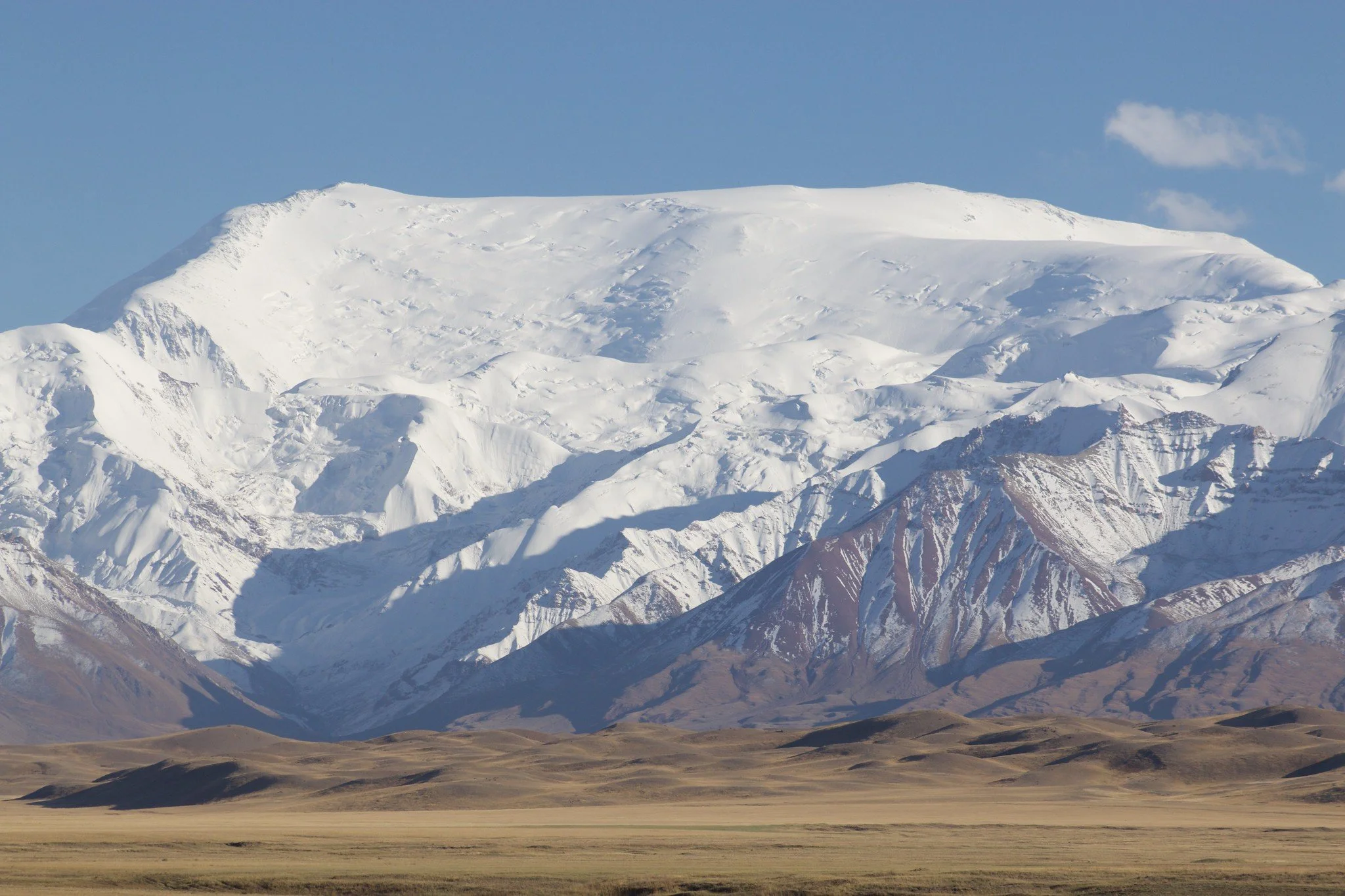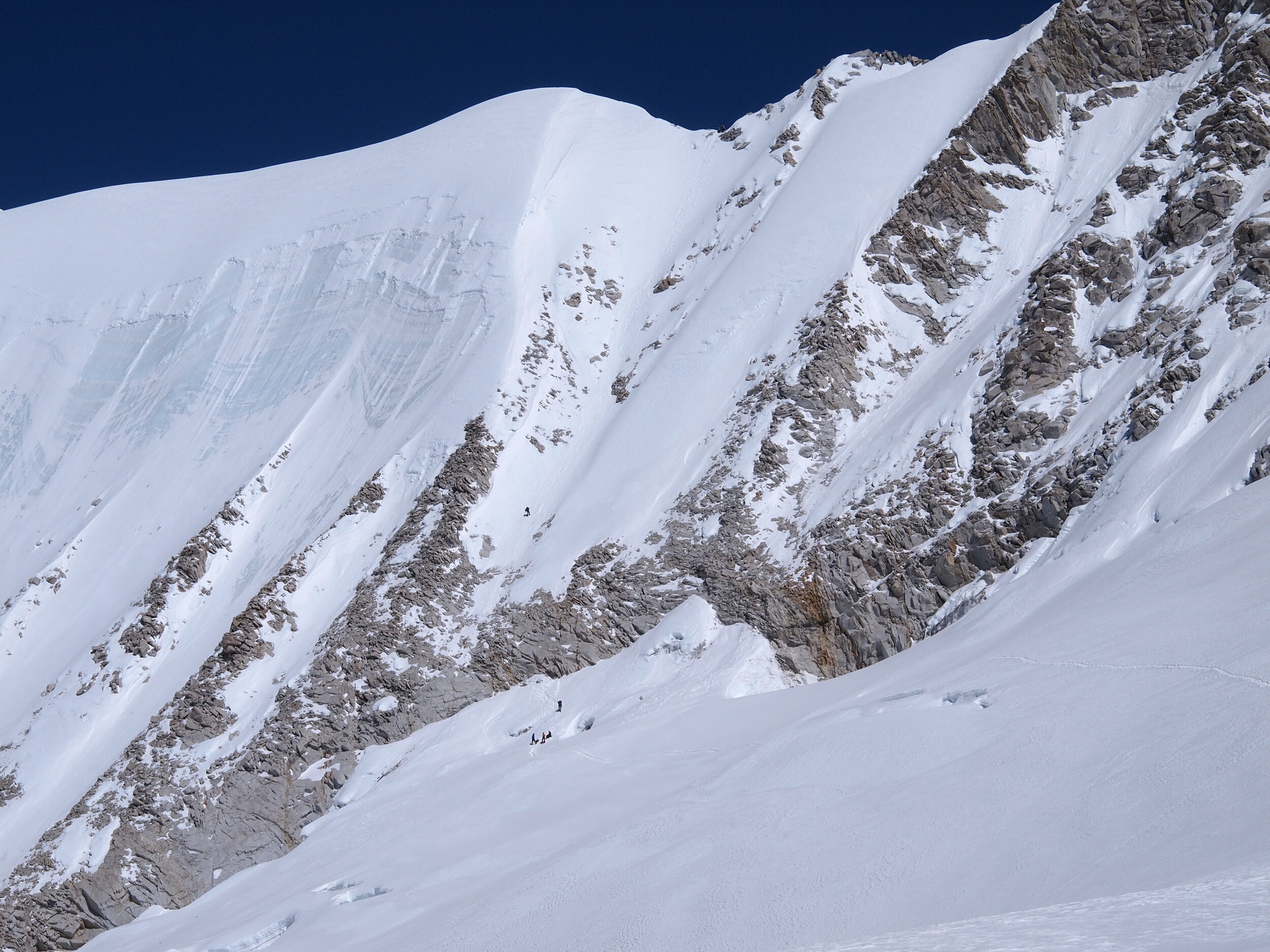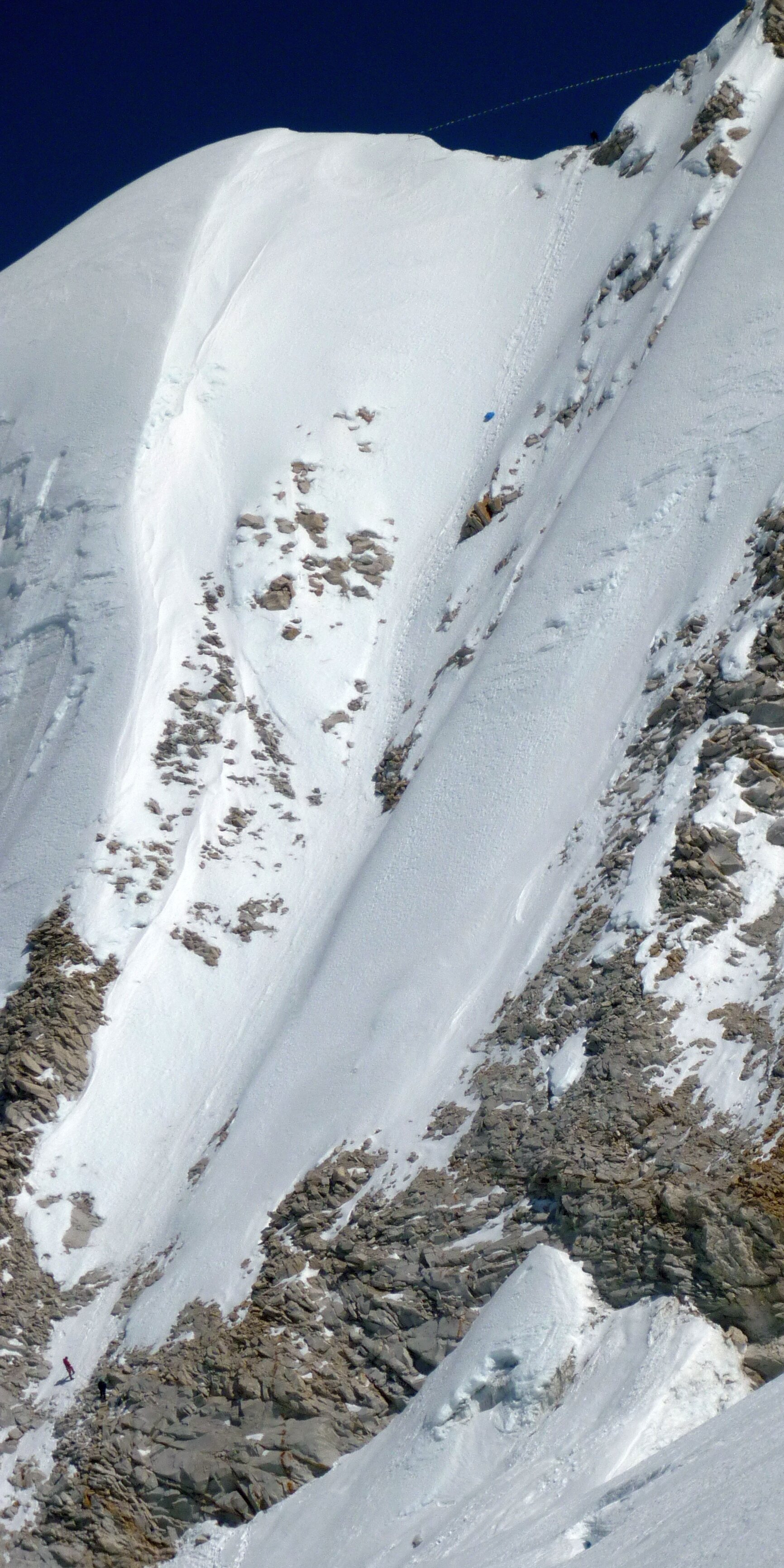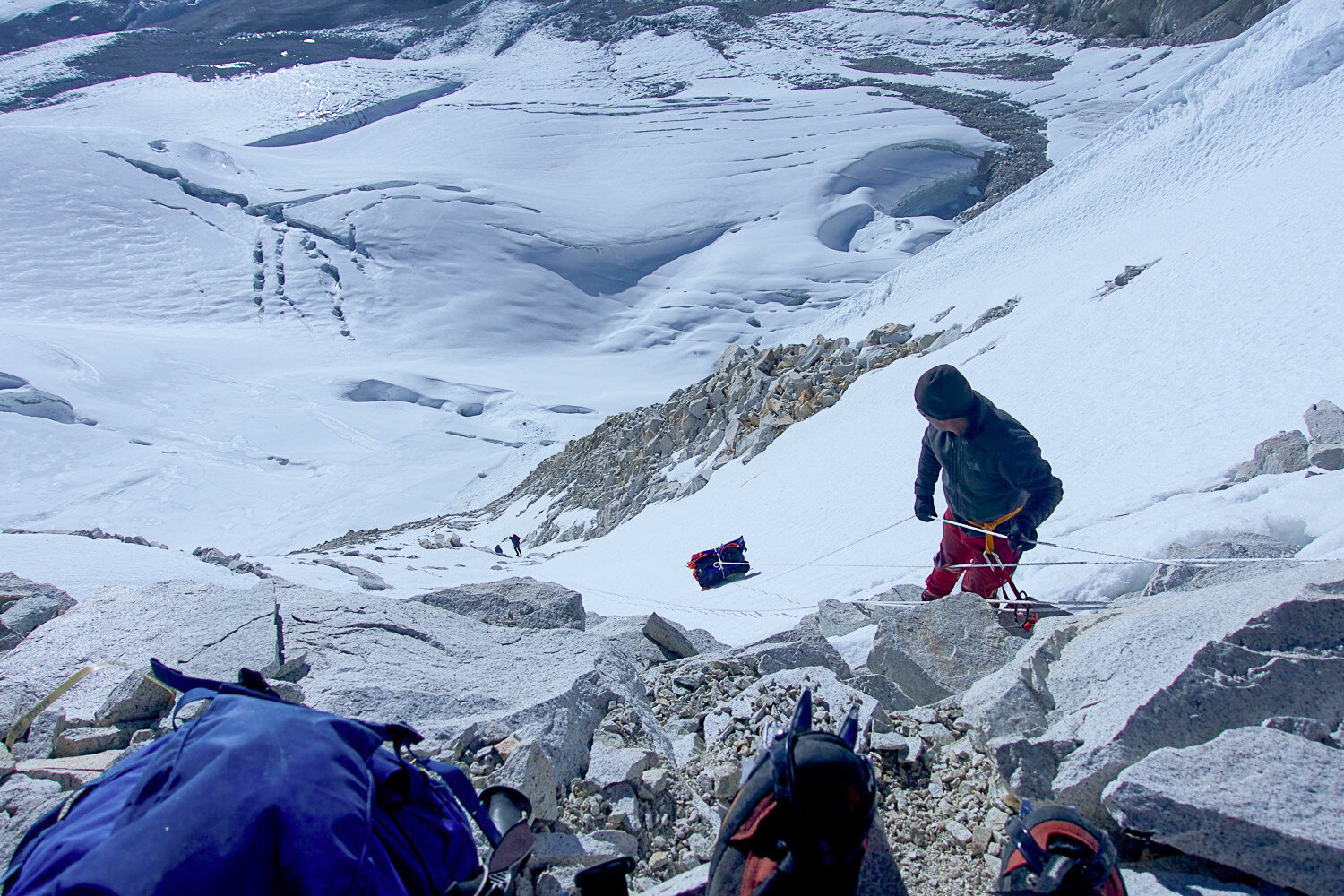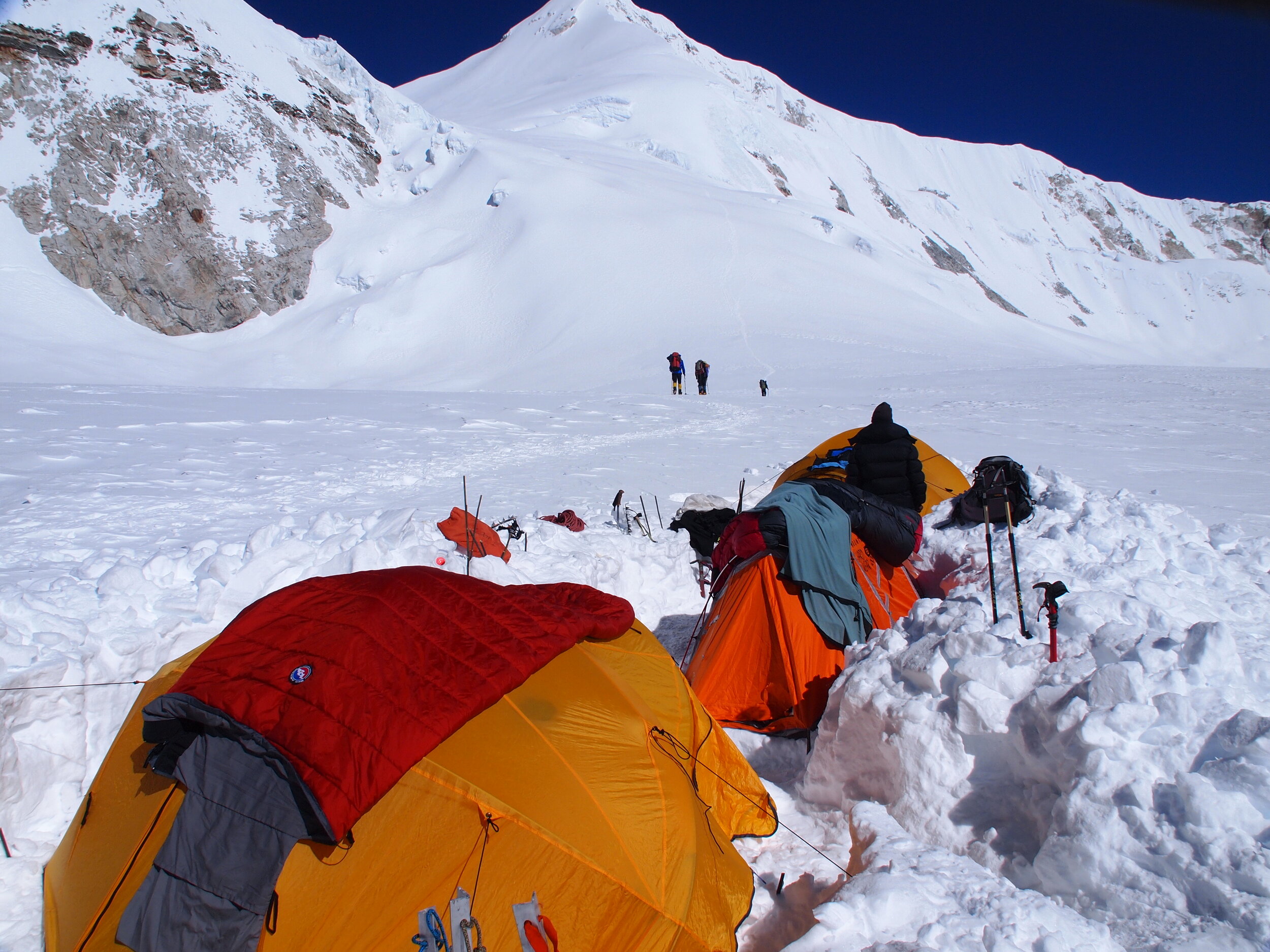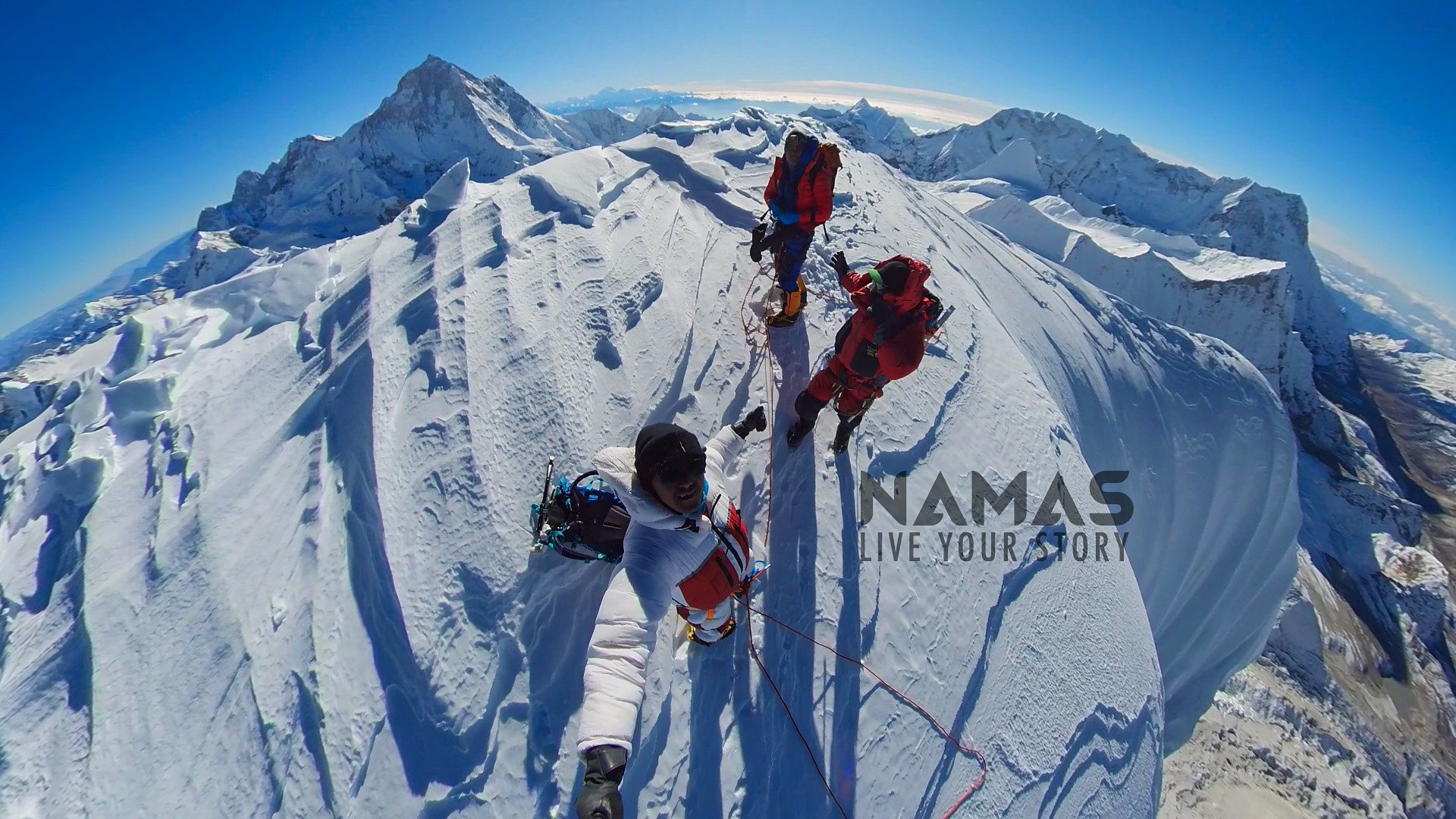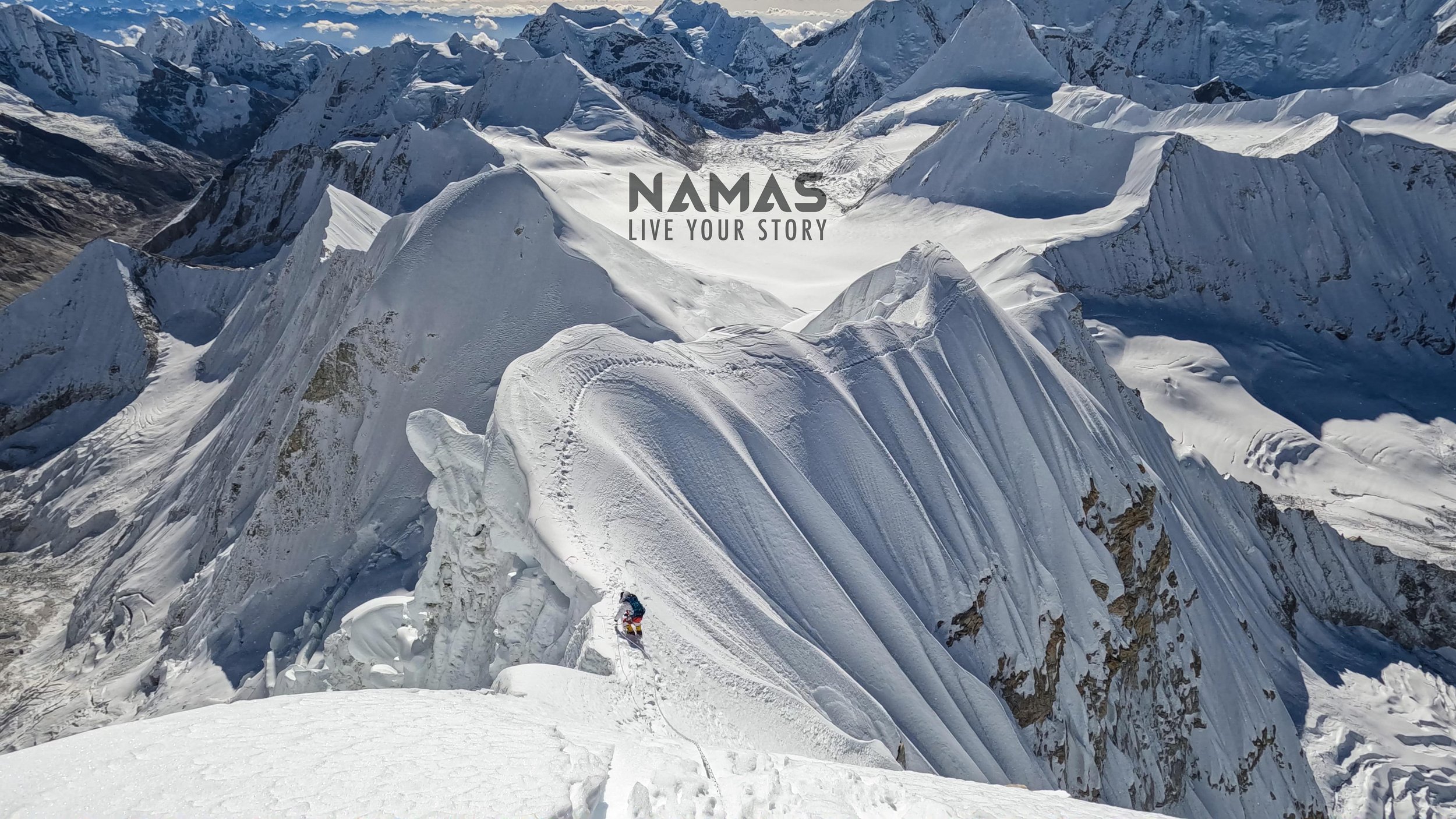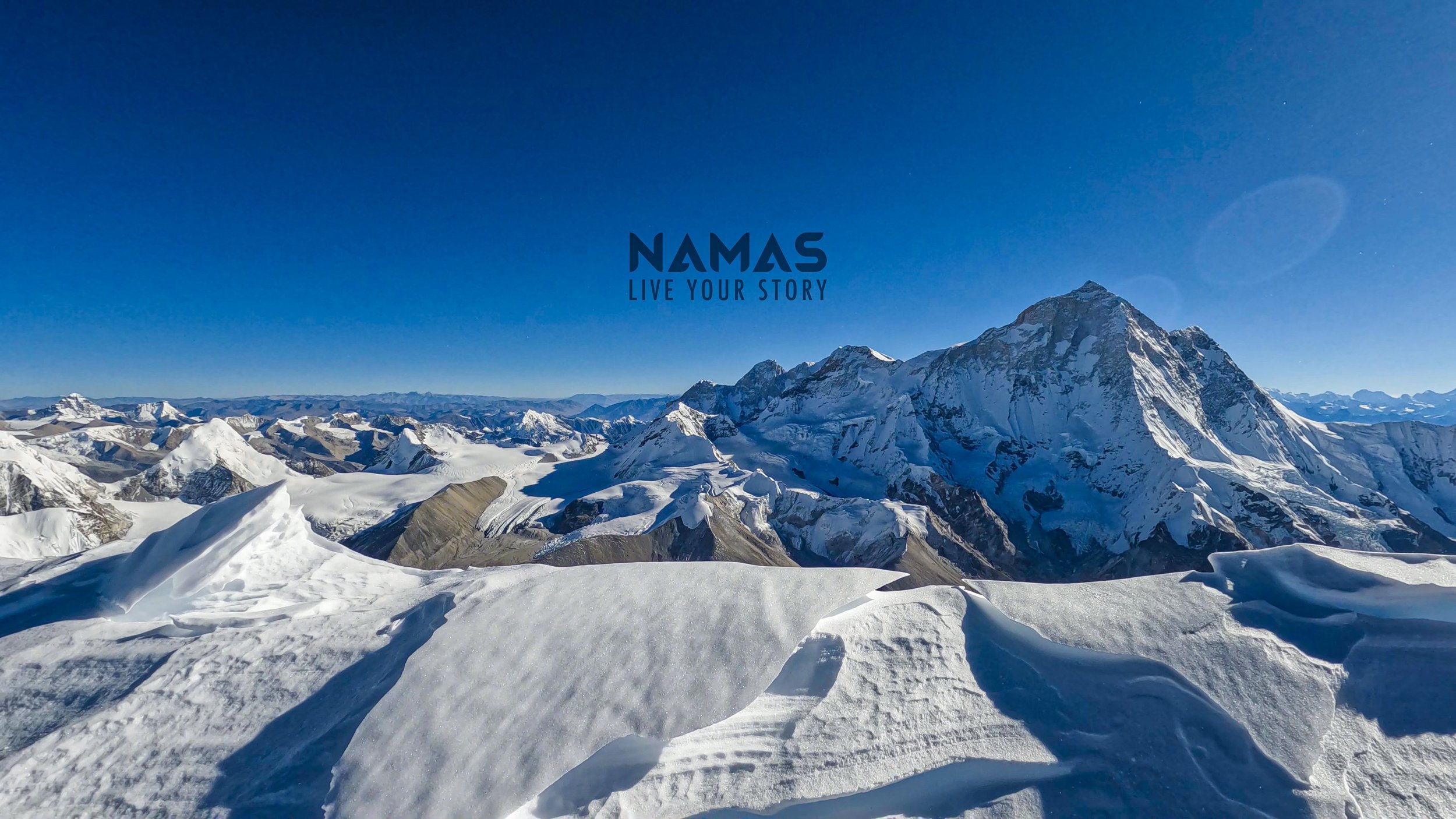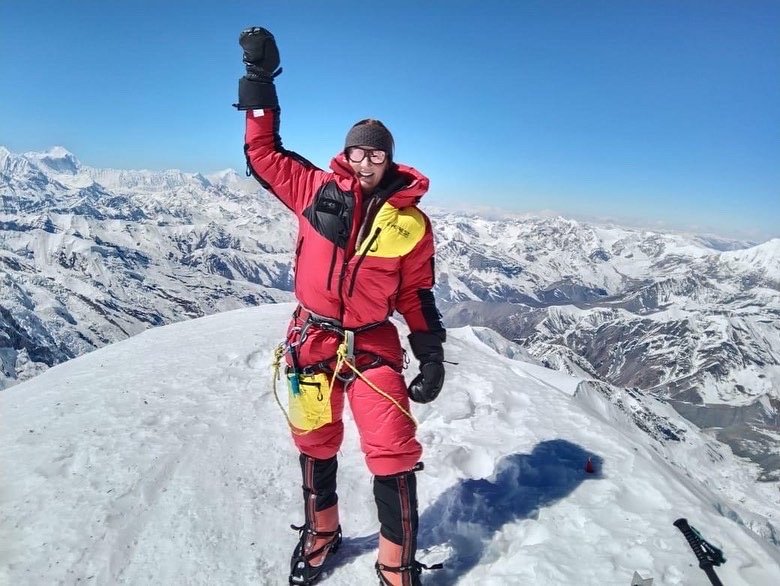Lenin Peak 7134M Expedition strategy - Namas Adventure
If you’ve been dreaming of summiting a 7,000-meter peak, Lenin Peak should definitely be on your radar. Situated on the border between Kyrgyzstan and Tajikistan, Lenin Peak stands at 7,134 meters, making it one of the most accessible summits in the world for mountaineers seeking a high-altitude challenge.
For climbers with prior experience on peaks between 4,000m to 6,000m, Lenin Peak is an excellent next step. It offers a mix of technical challenges and breathtaking landscapes, while being achievable with the right preparation and strategy.
Our Strategy for the Climb: Focus on Safety and Enjoyment
While Lenin Peak is considered one of the more accessible 7,000-meter mountains, it still poses some challenges. From harsh weather and crevasses to high-altitude conditions, the ascent requires careful planning and a solid climbing strategy.
Our approach is focused on gradual acclimatization, safety, and pacing ourselves through each stage of the journey. We’ve designed our route with the goal of ensuring every climber has a rewarding, successful experience. With this strategy, climbers will be able to tackle each stage of the ascent and have a strong chance at summiting safely.
The Journey Begins: Base Camp to Camp 1 (4,400m)
The adventure kicks off at the IMC "Pamir" base camp in the stunning Achik-Tash valley. After a day of rest and acclimatization, we’ll set off toward Camp 1, located at 4,400 meters. This first stretch takes you across the Lenin Glacier, where you'll navigate crevasses and snow-covered slopes. While the technical difficulty is moderate, it’s important to take it slow and allow your body to adjust to the increasing altitude.
The Rotation Phase: Preparing for the Final Push
Before attempting the final summit, acclimatization and building endurance are key. The rotation process involves climbing between IMC 'Pamir', Camp 1, Camp 2, and Camp 3, gradually gaining altitude, and then descending back to IMC "Pamir" for rest. This allows your body to adjust to the thinner air and prepares you for the final push to the summit. Climbers will make two or more rotations between these camps before heading to the summit. Each rotation helps climbers test their gear, optimize their techniques, and adjust to the altitude.
It’s essential to take this rotation phase seriously, as it maximizes your chances of success and safety on summit day. By the time we’re ready for the final push, you’ll be fully prepared.
Acclimatization: Home Peak or Yuhin Peak
Before ascending to Camp 2, we’ll spend two days preparing for the climb by making acclimatization hikes to Home Peak (4,750m) or Yuhin Peak (5,130m). These hikes will help your body adjust to higher altitudes and further prepare you for the ascent.
Camp 1 to Camp 2 (5,300m): Getting into the Groove
From Camp 1, we’ll ascend toward Camp 2, which sits at 5,300 meters. The terrain here involves crossing the dry Lenin Glacier and climbing long snow slopes. This section is challenging, but the scenery and the sense of progression will keep you motivated. By this point, we aim to give climbers ample time to acclimatize to the altitude and prepare for the more strenuous climbs ahead.
Camp 2 to Camp 3 (6,100m): The Big Push
From Camp 2, we will make our way to Camp 3 at 6,100 meters. This part of the journey will test your endurance, but the views of Razdelnaya Peak (6,148m) and the surrounding Pamir Mountains will make it worthwhile. From here, you’ll gain a new perspective on the Alai Plain to the north and the snow-capped peaks to the south. The climb to Camp 3 is physically demanding, but the summit ridge becomes visible, adding to the excitement of the ascent.
Return to IMC "Pamir" for Rest
After completing the rotation up to Camp 3, we’ll descend back to IMC "Pamir" to rest and allow our bodies to recover. This rest period is importance for ensuring that climbers are well-prepared for the summit push, allowing time for recovery and final adjustments.
Summit Push: The Final Ascent
Once rested and prepared, we’ll begin our summit push, following this progression:
- IMC "Pamir" to Camp 1
- Camp 1 to Camp 2
- Camp 2 to Camp 3 Finally, the most challenging part of the journey:
Camp 3 to Summit (7,134m): The Final Ascent
After completing the necessary rotations and returning to IMC "Pamir" for rest, climbers will be ready for the summit push. From Camp 3, the summit ridge becomes visible, signaling that the final climb is near. Depending on energy levels and weather conditions, climbers may choose to ascend in one go or set up an additional camp at 6,400 meters for a more gradual approach.
The final climb to the summit is demanding. It begins with reaching a pass through snow-covered slopes that are steep (about 50°) and exposed. As we continue to ascend, the slopes become less steep, and we navigate a few flatter sections. The steepest part of the climb occurs along the ridge, where we’ll install fixed ropes for safety. Once past this section, it’s a final push to the top. The summit of Lenin Peak offers sweeping views of the surrounding Pamir Mountains and distant peaks like Mustagh Ata and Kongur. Standing at 7,134 meters, you’ll be rewarded with a sense of accomplishment and unparalleled vistas. The summit is marked by a plaque of Lenin, adding a historical element to this epic adventure.
Descent and Reflection
After reaching the summit, it’s time to descend to Camp 3 to rest, then continue down to Camp 1 and ultimately back to IMC 'Pamir'. The last few days of the expedition allow time for reflection on your achievement, celebration with fellow climbers, and preparing for the journey home.
Why Join Our Lenin Peak Expedition?
Our Lenin Peak expedition is about more than just summiting the peak. It’s about enjoying yourself in the mountains, challenging your limits, and accomplishing something extraordinary with a team that cares about your success.
Whether you’ve tackled peaks like Kilimanjaro, Mount Elbrus, Khumbu 3 peak, Lobuche East or Island Peak or are looking for your 7000M challenge, Lenin Peak offers the perfect opportunity to test your skills and experience the majesty of the Pamir Mountains.
If you have any questions or are ready to join our next expedition, don’t hesitate to reach out. Contact us at bookings@namasadventure.com, and our team will be happy to help you on your journey.
Let’s go and explore the 7000ers
Live Your Story
Namas Adventure Team
Best 7000M+ peaks to climb in Nepal - Namas Adventure
Near the summit of Annapurna IV 7525M
Although 7000M peaks do not have the same level of prestige as 8000M peaks or the highest peaks in the world, they can still be a great challenge for adventure seekers. While these peaks may not be as well-known as their higher counterparts, they offer a unique and rewarding experience for climbers. 7000-meter peaks are ideal for those who are seeking a true adventure challenge, and who are motivated by a love of climbing, cultural immersion, and personal accomplishment. If you are one of these passionate climbers, consider embarking on a mountaineering expedition to one of the six 7000er peaks in Nepal listed in this post. These peaks offer a chance to push your limits and achieve something truly remarkable.
Below we have listed 6 amazing and remote peaks to climb in the Nepalese Himalayan range.
Note - Prior experience of alpine or mountaineering climb above 4000+M - 6000M+ is a must. Skill and fitness requirements will vary from different mountain peak objectives.
1. Himlung Himal 7126M (Least difficult & least technical 7000er)
Altitude: 7126M / 23,379ft
Climbers’ experience level: Intermediate/Advanced
Crowd level: Minimum (Spring, 5-20), Moderate (Autumn, 50 - 150)
Location: Annapurna Region
When to climb?: September - October
Duration: 30 Days
Difficulty grading: AD+/4 (Alpine/Fitness grading info)
Accommodation: Lodges and Base camp, Camp 1/2/3
Himlung Himal, standing at 7126 meters, is widely considered to be one of the safest and easiest 7000 meter peaks to climb in Nepal. Thanks to new, safer routes pioneered by French and Swiss climbers, Himlung Himal may become more accessible to climbers seeking a less technically demanding experience in western Nepal. The peak was not climbed until 1992, when it was conquered by a Japanese expedition, due to the fact that the area was not open to foreigners until the early 1990s. Located between the Manaslu and Annapurna ranges, the base camp for Himlung Himal is set up at an elevation of 4900 meters. The previous route up the peak, via the northwest ridge, has become increasingly prone to avalanche danger. A new, normal route was pioneered in 2013 by Kari Kobler of Switzerland, which offers an interesting and relatively short climb with limited objective danger. This route ascends the south flank of the northwest ridge to reach the upper crest, bypassing the previous route.
Note - Himlung Himal 7126M has the most successful summit records amongst all the 7000M+ commercial expeditions in Nepal. (Himalayan Database)
The Himlung Himal climbing expedition involves establishing 2-3 high camps at elevations of 5430 meters, 6000 meters, and 6300 meters. The summit day involves an ascent of 1100 meters through snow slopes with an angle of 40-45 degrees, requiring good snow conditions. Deep snow can pose a challenge even for strong teams. The climb is technically simple and objectively safe, making it an ideal preparation for your first 8000 meter peak.
History: First Ascent by the Japanese team in 1992.
Climb - Himlung Himal Link
2. Baruntse Peak 7129M (intermediate level and demanding)
Altitude: 7129M/ 23,389 ft
Acclimatization peak: Mera Peak 6476M
Climbers experience level: Intermediate level Experience
Crowd level: Minimum (Autumn, 15 - 40 climbers)
Location: Makalu Barun National Park
When to climb?: March-May or September - November
Duration: 32 - 35 Days
Difficulty Grading: D/ 4 (Alpine/Fitness grading info)
Accommodation: Lodges and Camping at Mera Peak/Baruntse BC/Camp 1 - 2
The Baruntse 7129M and Mera Peak 6476M climbing expedition offers a challenging and rewarding experience at the 7000 meter level. Baruntse, standing at 7129 meters, is located between Lhotse and Makalu, with other Himalayan peaks stretching out on either side. Teams often climb the nearby Mera Peak (6476 meters/21,246 feet) as an acclimatization climb, which falls on the same route as Baruntse. Once the base camp is established and the team has undergone training and a Puja ceremony, the real climb begins. Baruntse involves semi-technical climbing on steep slopes of 60 - 70 degrees incline to Camp 1 at 6000M via west col. The second camp is located at 6420 meters. Both camps are set up in exposed areas and are prone to high winds, so climbers should be prepared for unexpected weather conditions. The climbing route consists mainly of ice and snow, with very little rocky terrain after the first camp. Crevasses may appear more during the spring season compared to autumn along the route, and the objective at around 6900 meters can be dangerous. Experienced guidance is recommended in order to safely navigate the route to the summit.
History: Baruntse was first climbed on May 30, 1954 via the south ridge by Colin Todd and Geoff Harrow of a New Zealand expedition led by Sir Edmund Hillary.
Climb - Baruntse with Mera Peak Expedition link
3. Annapurna IV 7525M (advanced level, technical & physically demanding)
Altitude: 7525M / 24,688ft
Climbers experience level: Intermediate+/Advanced
Crowd level: Minimum (Spring/Autumn, 0 - 20)
Location: Annapurna Region
When to climb?: September - October
Total no of days: 33 Days
Difficulty grading: TD+/4 (Alpine/Fitness grading info)
Accommodation: Lodges and Base camp, Camps 1/2/3/4
Annapurna IV 7525M, is a great mountaineering objective for climbers looking for a challenging, but relatively safe and semi-technical climb. At 7527 meters, it is part of the Annapurna massif range and is located between Annapurna II and Annapurna III. While it may not be as popular as other peaks in the region, it offers fewer objective dangers and is considered the least technical of the Annapurna massif peaks (Annapurna I, II, III, IV, and Gangapurna). This mountain is not climbed as often as other peaks in the region.
History: Annapurna IV was first climbed in 1955 by a German expedition led by Heinz Steinmetz via the North Face and Northwest Ridge.
4. Tilicho Peak 7134M (intermediate level and remote climb)
Tiicho Peak 7134M.
Altitude: 7134M / 23,405ft ft
Climbers experience level: Intermediate to advanced
Crowd level: Minimum (Spring/autumn, 0-10 members)
Location: Annapurna Region
When to climb?: September - October-November
Total no of days: 32 Days
Difficulty grading: D+/4 (Alpine grading info)
Accommodation: Lodges and Basecamp, Camps 1/2/3
If you're seeking a technical challenge at the 7000M level, Tilicho Peak may be the climb for you. The expedition starts with a beautiful trek through the Annapurna circuit, culminating in a visit to Tilicho lake, the highest lake in the world, at an elevation of 4910 meters. Located in the Annapurna region of Nepal to the north of Manang, Tilicho Peak stands at a majestic 7134 meters. Its northeast ridge, covered in snow, towers over the Kali Gandaki valley to the west and the Marshyangdi Valley to the east, with the hidden kingdom of Mustang just a few miles to the north. The standard climbing route for the peak is the northwest shoulder, with the base camp located at 4910 meters on the northwest end of the lake.
Tilicho Peak is a technical climb that requires proficiency in climbing skills and physical fitness. It is recommended that climbers have previous experience in alpine and high-altitude climbing. The peak is graded as 4D, with a combination of rock and ice climbing, as well as glaciers. There are three high camps established on the route to the summit of Tilicho Peak. The climb from the base camp to Camp 1 at 5800 meters is straightforward, along a 50-degree mixed rock and ice route that is 590 meters in length. Camp 2, at 6200 meters, is located on the shoulder and can be accessed via a 55-degree snowfield that is 450 meters in length. The shoulder has an angle of 55 degrees and an 800-meter snowfield, with low objective danger and minimal exposure due to the wide width of the shoulder. Fixed ropes are required for the 40-degree slope to reach Camp 2 at 6300 meters. The summit is approached by climbing stretches of a 60-degree slope.
History: The first ascent was made in 1978 by the French climber Emanuel Schmutz using the northwest shoulder.
Climb - Tilicho Peak (Click here)
5. Putha Hiunchuli 7246M (Dhaulagiri VII) (least difficult and least technical. Remote 7000er)
Putha Hiunchuli (Dhaulagiri VII) 7246M, Photo by - Nunatak
Altitude: 7,246M / 23773ft
Difficulty: Least difficult and least technical
Crowd level: Minimum (Autumn, 5 - 20)
Location: Dhaulagiri Range
When to climb?: September - October
Total no of days: 31 Days
Difficulty grading: AD+/4 (Alpine grading info)
Accommodation: Lodges and Basecamp, Camp 1/2/3
Dhaulagiri VII (also known as 'Putha Hiunchuli') is one of the most accessible 7000M+ peaks in the Dhaulagiri range. It is located in the remote Dolpo or the wild west region of Nepal. Although most of the 7000M+ peaks are in remote corners of Nepal, this region even to locals is remotest compared to other regions of Nepal.
The climbing route has no significant technical climbing, the mountain is still a serious undertaking and provides excellent training for those who want to attempt Everest or other 8,000m peaks. Teams will be setting up three high altitude camps and a base camp. This can be considered as one of the easy climbs when we compare it amongst other 7000M peaks yet it is not to be underestimated. If you want to add an extra thrill then climbers with off-piste ski experiences can attempt a ski when descending.
History: This peak was first climbed by J.O.M Roberts and Ang Nima Sherpa in 1954.
Climb - Putha Hiunchuli (Dhaulagiri VII) Click here
6. Ama Dablam 6819M (advanced level & technical climb)
Altitude: 6,812M / 22,349ft
Acclimatization: Island peak 6180M
Climbers experience level: Advanced/Pro Level
Crowd level: Minimum (Spring, 5 - 20), Excessive (Autumn, 200 - 300) Mid October - Mid November is the busiest.
Location: Khumbu Region
When to climb?: September - November
Total no of days: 30 Days
Difficulty grading: TD+/5 (Alpine/Fitness grading info)
Accommodation: Lodges and Cam / Camping Island Peak BC/Highcamp/ Ama Dablam BC / Camp 1-2 and Camp 2.1 (depending on yearly climbing assessment)
Ama Dablam, standing at 6,856 meters, may not be as tall as some of the other 7000M peaks, but it is no less challenging. In fact, it is considered to be just as difficult as many of the 7000-meter peaks and is a must-do for alpine and mountain climbing enthusiasts. The combination of rock, snow, and ice climbing, along with exposed terrain and sections of almost 90-degree slopes, makes this peak a true test of skill and endurance. It is also known for its beauty and is highly sought after by even seasoned Everest summiteers. If you are looking for a thrilling and challenging mountain climbing experience, Ama Dablam is the peak for you.
Expedition teams normally utilize Island peak 6189M as an acclimatization peak before settling down at Ama Dablam base camp. The peak attracts a lot of climbers during the autumn season, rightly so because of its climbing nature. This expedition involves a cultural trek into the base camp and climbing on technical rock, vertical snow and ice routes and stunning exposed panoramic views of Everest, Lhotse, and Makalu from the summit. Teams climb Amadablam via the South West ridge, a technical route, and the standard route setting up 2 or possibly 3 camps (camp 3 depends on the assessment by each year’s rope fixing team). The route on the summit day is on steep snow and ice slopes, with outrageous exposure directly to the summit.
History: Ama Dablam was first summited on 13th March 1961, a Silver hut scientific expedition lead by Sir Edmund Hillary.
Climb - Ama Dablam with Island Peak Expedition (Link)
If you're looking to add some incredible mountain climbing experiences to your repertoire, consider tackling one of the 7000M+ peaks. Whether you're looking to build up to climbing even higher or just want the thrill of a mountaineering expedition, the peaks listed above offer some of the best mountain climbing adventures in the world. Located in remote areas and reaching high altitudes, each of these peaks has its own unique character and climbing challenges. We hope that these 7000M+ peaks will receive the recognition they deserve and that Nepal will continue to welcome mountain climbers from around the globe.
If you have any questions then there are some peaks like Baruntse, Ama Dablam, Tilicho Peak, Himlung Himal, and Annapurna IV expedition. We at Namas organize yearly departures but for other peaks such as Putha Hiunchuli, and Gangapurna upon inquiry our team will be able to organize a fully serviced expedition.
Go. Dare greater things.
Live Your Story.
Other related articles:
When is the best time to climb Himlung Himal? Spring or Autumn? - Namas Adventure
Climbing the final summit ridge at Himlung Himal 7126M
Himlung Himal is one of the best options to climb a 7000M+ peak in the remote corner of the Annapurna region. This 7000M peak expedition is classed as one of the most accessible, safest, semi-technical climbs with a higher summit success rate at 7000M peak mountain expeditions.
This peak is suitable to climb during both seasons but more success stories have been officially recorded of the autumn season’s climb. See our blog post on Baruntse or Himlung Himal for data from 2017 to 2020 (Link). For those interested in their first 7000M peak expeditions, we often get asked when is the best time to climb Himlung Himal?
With years of running expeditions and gathering local information passed on from our guides, who have been climbing year in and out, and collecting data from local databases, we would say it depends on your preference for climbing a mountain in different conditions. The great news is that Himlung Himal is suitable to climb during late spring and during early to mid-autumn. Here, we aim to lay out the conditions during spring and autumn so that you can choose to climb in the season you prefer.
What is the difference between Spring & Autumn climb? 🧗
There are fewer climbers during the spring season compared to the autumn season.
More snow during spring compared to autumn climbs
A high probability of wind speed picking up and extreme freezing temperature drop during late autumn.
The spring season sees a longer daylight duration compared to the autumn season.
Late April to May and Mid-September to October are the best time to climb.
Autumn sees more stable weather compared to the spring season.
In spring (late April - May) some of the winter snow will have melted in the mountains making it favorable to climb. Himlung Himal is known to have more snow (more so during spring), so do not underestimate the grit you will have to go through when climbing this peak. Weather can never be guaranteed in the mountains and you should expect some weather-related disturbances during your climb even though this is the best time to climb. If you are one who enjoys a bit of an extra challenge at extreme altitude peak climbing then spring expeditions might your pick.
Every mountain definitely tests your patience especially when things don’t go according to the plan and teams will have to improvise and wait out for climbable conditions. Spring sees fewer climbers than other peaks (Everest/Lhotse excluded) compared to autumn. When spring does open up with a clear weather window it is one of the best times to climb in Nepal. Oh! and not to forget you and your team will have the whole of the mountain to yourself. There is hardly any team in Himlung Himal during the spring season.
Autumn (Mid September - October) is the next time to climb Himlung Himal. A number of teams can be expected during this season compared to the spring season. After Manaslu 8163M teams are focused on either Himlung Himal 7129M, Baruntse 7129M, or Ama Dablam 6810M (the most teams). Guides have reported that as soon as November hits high winds start to pick up in the mountain and this has been the case for the past several years most summits have been in October or in the first week of November.
Himlung Himal has the highest summit records during the autumn season when compared amongst all the commercial 7000M+ expeditions that operate in Nepal. So under good to perfect conditions and the mountain not being super-difficult to climb, technically, Himlung Himal is the best 7000M+ expedition to climb during autumn.
Conclusion
Whichever is your preferred season, climbing Himlung Himal 7129 is an amazing 7000M+ expedition to be undertaken. Spring hosts fewer climbers when compared to autumn and conditions are suitable to climb during both seasons as mentioned above. If you are up for a challenge and prefer to see fewer climbers during the expedition then spring departures are for you. If you are comfortable with some amount of teams being in the mountains then autumn is still a great time to climb this 7000er peak. The thrill and challenges of climbing a remote Himalayan peak are guaranteed. You as a climber choose your climbing condition and the thrill of a great climbing experience is guaranteed. Either way, it is an amazing peak to climb and an accomplishment of a lifetime.
Let’s go, and climb Himlung Himal and other peaks around the world.
Go. Live Your Story.
Question.
Which season do you plan to climb Himlung Himal? Please comment below, we’d love to hear from you.
We organize Himlung Himal 7129M peak expedition every year during spring and during autumn. Planning to climb a 7000M+ peak one day? Whatever your climbing goal is drop us an email. Our team will be glad to have you onboard and together we shall achieve the summit and enjoy the climbing experience. Our team is here to assist and make your climb in the Himalayas an enjoyable, accessible, and comfortable one.
Baruntse Peak: A Climbers’ Guide - Namas Adventure
Mountain Overview
Elevation: 7129M / 23389FT
Co-ordinates: 27°52′18″N 86°58′48″E
Location: Makalu / Barun Valley
Parent Mountain: None
Summits: 3 Fore Summit / 1 Main Summit
Country: Nepal
About the Mountain
Baruntse peak 7129M is located in the Himalayan region of Nepal, just between Lhotse 8516M and Makalu 8463M. Crowned by four peaks and bounded on the south by the Hunku Glacier, on the east by the Barun Glacier flowing north-south from Cho to the north-west by the Imja glacier, and the Hunku glacier forms the south-east boundary. Baruntse mountain stretch has four ridges and four summits. The three main ridges are situated between the glaciers, the fourth main summit lies to the west near Cho Polu peak.
History
Baruntse was first climbed on 30 May 1954, via the south ridge by Colin Todd and Geoff Harrow of a New Zealand expedition led by Sir Edmund Hillary.
How to get here?
There are three main routes to get to Baruntse Base Camp.
Via Mera Peak acclimatisation / route
Via Imja lake route, climbing Amphu Lhabtsa pass 5800
Via Sherpini col 5600M from Makalu route
Baruntse Routes
RED Route (Heavenly trap - 2021) and Blue Route (Russian Efimov 1995)
Southeast Ridge (Normal/safest Expedition route)
West Face (Heavenly trap) route, May 2021 - Two-time Piolet d'Or recipient Marek "Mara" Holecek and fellow Czech climber Radoslav "Radar" Groh completed a new route ascent to Baruntse 7129M in alpine style via the west face route which they named as “Heavenly trap” (ABO+: VI+ M6+ 80°, 1300m).
Russian Efimov Route 1995
East Ridge - 1980 by Lorenzo Ortas, Javier Escartín, Jeronimo Lopez (all Spain) and Carlos Buhler (America) of a Spanish expedition led by Juan José Díaz Ibañez.
Barutnse Base Camp 5640M
Baruntse Base Camp 5460M
Baruntse base camp is at 5640M, a few kilometers further up the glacier at the entrance to the valley which gives access to East Col. From a camp set up immediately below the pass, it is easy to cross East Col to West col and reaching Camp 1 (6,146 M) at a large snowy plateau, on the Lower Barun Glacier.
West Col 5800M
210M high, 45-degree climb on a vertical snow, rock, and ice wall to reach the ridge section. This is the first technical and objective challenge to overcome at the 5800M level.
Camp 1, 6100M
After climbing up the West col, traversing through the ridge, and hiking further down climbers will come across an open area to set up their camp 1. Normally, Baruntse camp 1 sits at 6100M level after climbing the vertical wall and traversing towards the wide-open flowing Barun glacier.
Camp 2, 6400M
Camp 2 is not far from camp 2 rather a gradual steep hill to climb and gain some altitude on the fore mountains of Baruntse. Climbing mostly on ice/snow section camp 2 is established at 6400M elevation just below the steep section which is the path for summit push.
Camp 2, Baruntse 6400M
Summit 7129M
Summit push is where most of the climb is done during the Baruntse climb. Snow and ice conditions differ every year as with most of the mountains. Fixed-line ropes are usually fixed only above camp 2. The climb from camp 2 is mostly a steep uphill climb until climbers reach the ridge/cornice section around 6600M.
The climb from here onwards is the most technical part of the climb. Fixed-line ropes will be been set up by the Sherpa team and the climb is mostly on the exposed and steep, climbing/traversing mostly on the cornice formed on the ridge of the entire Baruntse mountain. Baruntse has 3 false summits with the final summit being the farthest. The summit of Baruntse is only a small surface area on the main summit.
Climbers will have to descend the same way back. Extra caution is required as this will be 4-5 hours of the slow and tiring way back with the goal to reach camp 1.
Express Itinerary
With the use of helicopters after the summit, the expedition can be shortened up to 23 to 24 days. Flying from Baruntse Base camp 5460M to Lukla.
Further extensions
(i) Makalu expedition. Continued further down via Sherpini col and then arrive at Makalu base camp to climb. Extra 20 - 25 days required to climb Makalu (with contingency days) We highly recommend spring season if you are to plan Makalu expedition as the weather is more stable during spring than the autumn season.
(ii) Ama Dablam and Island Peak. Climb the famous and stunningly beautiful Ama Dablam. A technical climbing challenge. Can be planned during both Spring (less climbers) and Autumn (busier many climbers expected) season.
(iii) Island Peak and Lobuche East. Bag some more 6000M+ expedition in the Khumbu valley
Bonus: Amphu Lhabtsa Pass
Amphu Labtsa pass is a glaciated pass located at the head of the Honku valley. The base of the valley is located at 5,000 m (16,400 ft) and contains several glacial lakes. Amphu Lapcha is zigzag glaciers formations with base camps at North and south where we have to stop for a camp night. View from Amphu Labtsa passes Imja valley, Everest, Lhotse, Nuptse, Island peak, Ama Dablam, Baruntse, just awesome.
Are you planning to climb Baruntse 7129M mountain peak someday in the near future? If yes then our team specializes in remote mountain peaks in the Himalayan region. We go where few ventures, safely access and navigate these parts of the Himalayas, creating new possibilities in the mountains.
For more information on our Baruntse expedition or Baruntse Express expedition or any of our other international expeditions check out our website. (Call/WhatsApp) - +44 7446976060 or send us an email at bookings@namasadventure.com
Go. Explore more.
Live Your Story
Himlung Himal Expedition (Experience, fitness level and skills) requirements - Namas Adventure
What previous experience is required to climb Himlung Himal?
When planning a Himlung Himal expedition, it is important to consider your previous climbing experience. This 7000M+ peak presents a number of challenges, including the need for comfort and experience with ropes, climbing gear, and fixed-line techniques, as well as the ability to withstand cold and potentially adverse weather conditions.
While Himlung Himal may not be the most technically demanding of the 7000M peaks in Nepal, it is still a significant undertaking that requires a strong level of skill and preparedness. If you have limited climbing experience, this peak may be a good option to start your journey into 7000M+ expeditions. Its relatively high success rate and the fact that it requires the use of gear and fixed lines make it a suitable choice for those looking to build their skills and confidence. Regardless of your level of experience, it is crucial to be physically and mentally prepared for the demands of this expedition.
Preferred Previous mountaineering experiences
Anywhere above 4000M - 6500M+ peaks with semi-technical to technical climbs around the world. For example Alpamayo, Huscaran, Aconcagua, Kilimanjaro, Mt. Kenya, Denali, Mt. Blanc, Mt lenin, Ebrus. The general term is any semi-technical to technical peaks that are higher and have longer ascend and descend sections. These experiences do qualify you to take on Baruntse and other 7000M peaks in the Himalayas.
Fitness level - 4
We have graded fitness level 4 for Mount Himlung. An exceptional level of all-around fitness will be required to cope with the exceptionally strenuous nature of these expeditions. An exceptional level of endurance and strength fitness level is required. The mental toughness aspect is equally required. Experience is required to be able to take on tours of this physical grading.
The difficult issue is how you train for such exceptional conditions. Hard work will be required to get to that fitness level. For a General fitness indication, climbers should be able to run a half marathon or be able to cycle for 2 -3 hours. If you prefer hiking, you should be able to carry a load of 20 kilograms and hike for 3 to 4 hours.
Good strength and muscle endurance training routines can be implemented with a variety of approaches such as taking part in cross-fit sessions and kettlebell training.
Skills to be learned.
Guides in Nepal will advise you to keep it real simple. So there are four basic things you must - must know.
Figure 8 knot and how to tie a stopper knot at the end of the rope.
Ascending/jumaring on fixed-line and abseiling with super 8 belay device or ATC descender in multi-pitch sections. You will have to be very very careful and well-rehearsed on abseiling since there is no room for errors when descending. You only get that one chance when coming down so you will have to be super careful. And for safety backup have ‘prusik knot’ tied on the main rope.
Climbing, traversing, and hiking with crampons on for long-duration on ice, rock, and snow surface.
Performing snow arrest and safely getting back up if by any chance climbers slip and slide.
As climbers joining Himlung Himal expedition will already have previous experiences, we recommend climbers to have extra essential skills in their climbing arsenal. If you cant find mountains to climb near your place, rock climbing indoors and outdoors is one of the best ways to keep refreshing your rope skills and staying in climbing shape.
With all commercial expeditions, the majority of your expedition is handled and taken care of by your expedition company. Having competent members from operational management to guiding leaders on the field is key for any successful expedition. Once you are signed up and you’ve got the necessary skills and experience all you need to be is physically and mentally prepared that is your commitment to fitness training.
Challenge yourself.
Go. Live Your Story
Are you planning to climb a remote, rugged, and challenging 7000M+ peak with substantially less objective danger? Whether your goal is simply to climb an extremely high altitude peak, explore and climb remote peaks in Nepal, or progress to higher 8000M+ peaks then our team at Namas Adventure/Expedition is set for your next adventure. Email - bookings@namasadventure.com or Call/Whatsapp us at +447446976060 and our team will be there to answer your inquiry and instruct you with any questions regarding the expedition.


